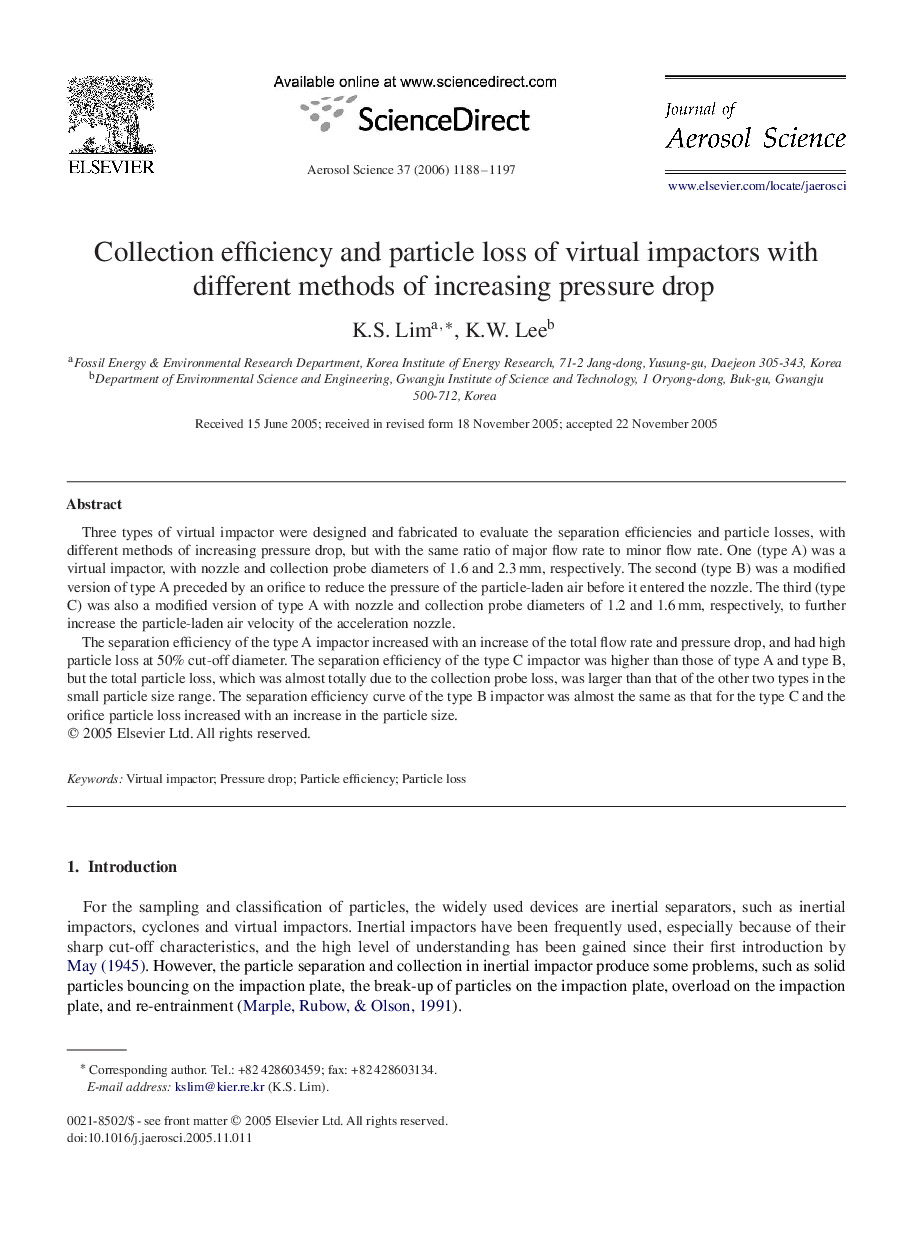| Article ID | Journal | Published Year | Pages | File Type |
|---|---|---|---|---|
| 4453278 | Journal of Aerosol Science | 2006 | 10 Pages |
Three types of virtual impactor were designed and fabricated to evaluate the separation efficiencies and particle losses, with different methods of increasing pressure drop, but with the same ratio of major flow rate to minor flow rate. One (type A) was a virtual impactor, with nozzle and collection probe diameters of 1.6 and 2.3 mm, respectively. The second (type B) was a modified version of type A preceded by an orifice to reduce the pressure of the particle-laden air before it entered the nozzle. The third (type C) was also a modified version of type A with nozzle and collection probe diameters of 1.2 and 1.6 mm, respectively, to further increase the particle-laden air velocity of the acceleration nozzle.The separation efficiency of the type A impactor increased with an increase of the total flow rate and pressure drop, and had high particle loss at 50% cut-off diameter. The separation efficiency of the type C impactor was higher than those of type A and type B, but the total particle loss, which was almost totally due to the collection probe loss, was larger than that of the other two types in the small particle size range. The separation efficiency curve of the type B impactor was almost the same as that for the type C and the orifice particle loss increased with an increase in the particle size.
